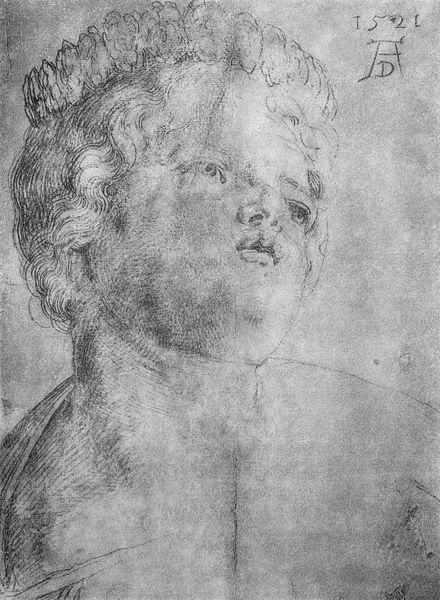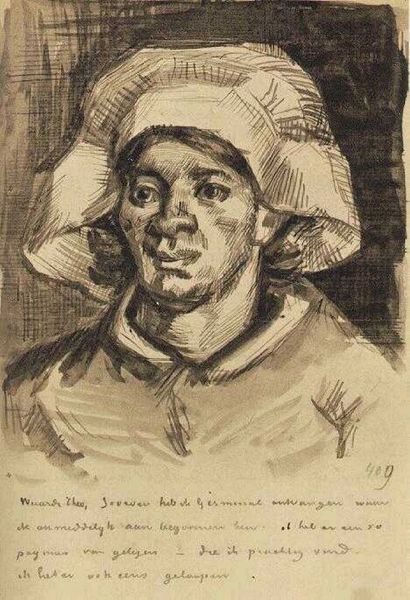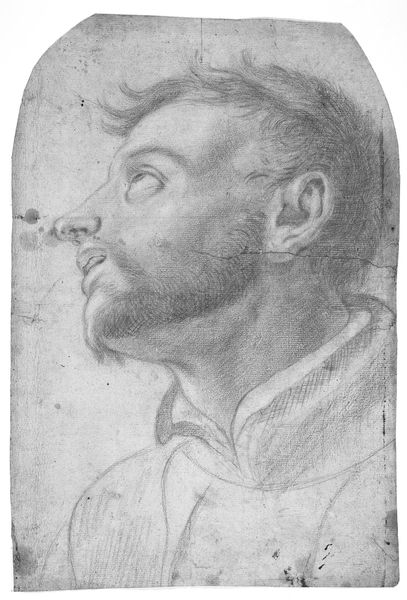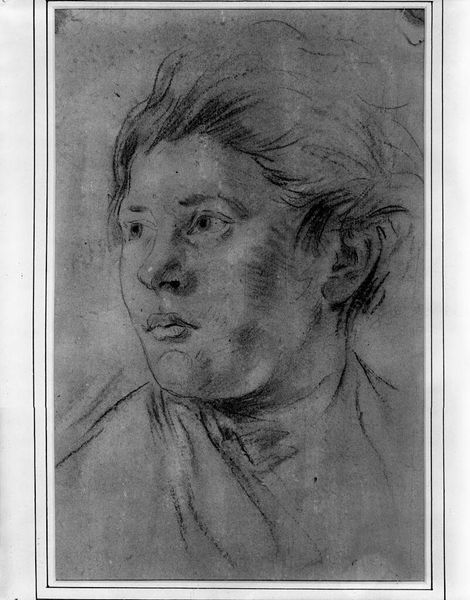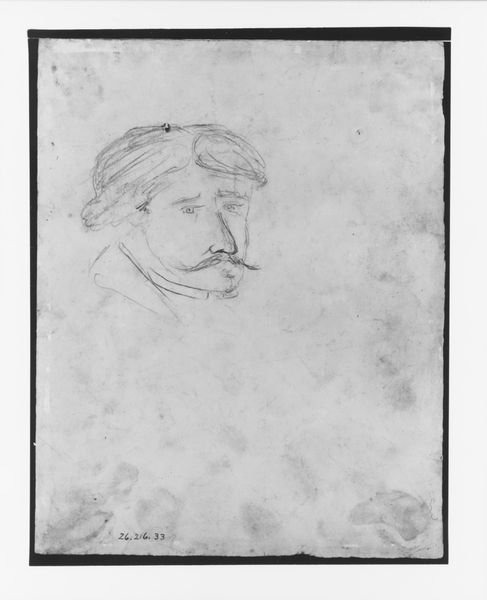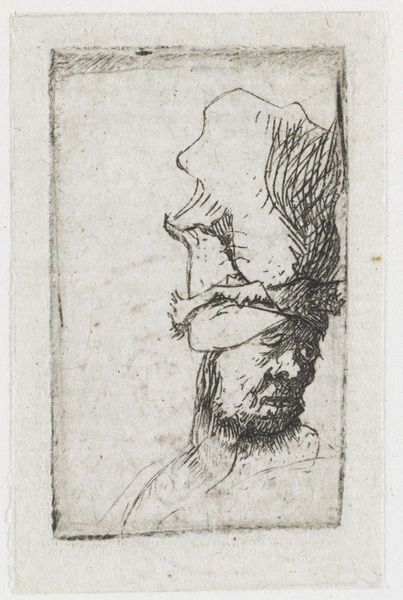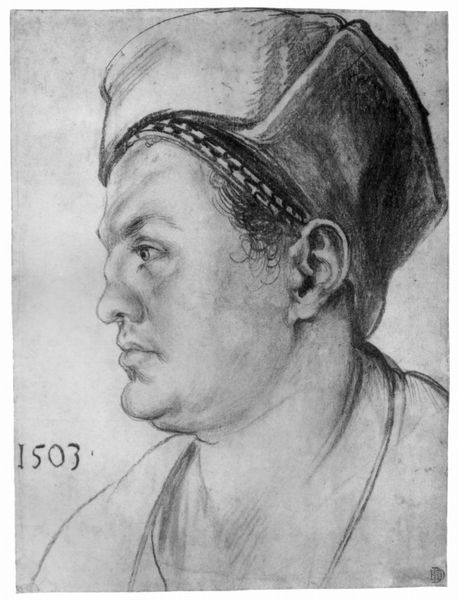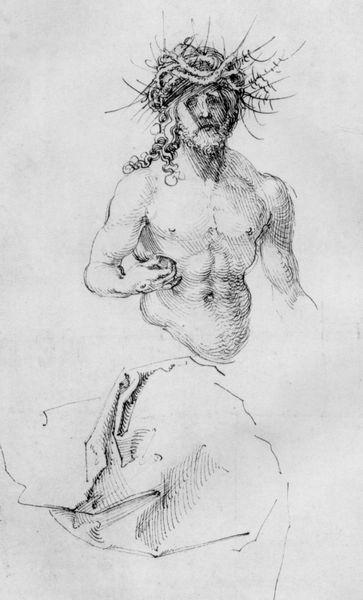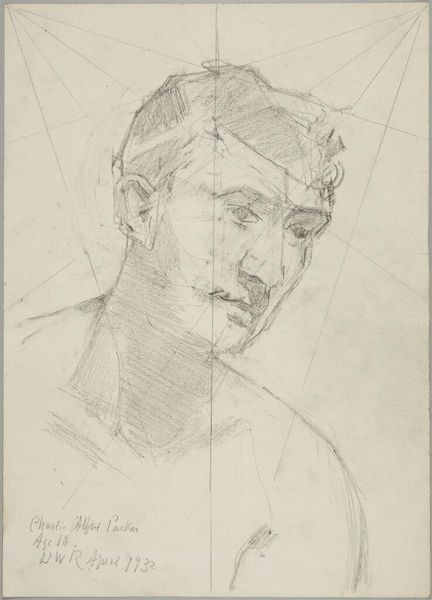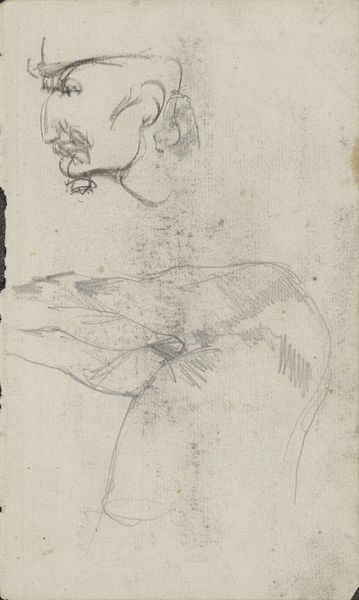
drawing, charcoal
#
portrait
#
drawing
#
self-portrait
#
charcoal drawing
#
figuration
#
form
#
portrait drawing
#
charcoal
#
northern-renaissance
#
portrait art
#
realism
Copyright: Public domain
Editor: We’re looking at Albrecht Durer’s “Head of a Suffering Man” from 1503, a charcoal drawing held at the British Museum. I’m struck by the intense emotion captured, it's so palpable. What can you tell me about it from a formalist point of view? Curator: Note how the artist orchestrates light and shadow to construct a narrative of profound emotional depth. Consider the medium itself – charcoal. Its inherent fragility mirrors the ephemeral nature of suffering. How does the application of charcoal, specifically, guide your reading of the work? Editor: I guess I hadn't thought about the choice of medium, it’s not like the permanence of oil paint. The smudged lines around the eyes contribute to the sense of pain. Also, the head is cut off, close-up and confronting. Curator: Precisely. The cropped composition forces an intimacy, emphasizing the textures of skin and fabric. Observe the contrast between the tightly controlled lines defining the facial features and the looser, more gestural strokes suggesting the headdress. What might this dichotomy convey? Editor: Maybe a struggle between control and surrender? The rigid form versus the overwhelming feeling? It also creates depth – you can really feel the different planes of the face and how they sit within the confines of the frame. Curator: A perceptive reading. Durer's command of chiaroscuro, the interplay of light and dark, elevates this study beyond mere representation. Through careful attention to formal elements, Durer communicates not only an image of suffering but its very essence. Editor: I never thought of charcoal as communicating an "essence" itself. Looking closer, it seems that the tight crop combined with the drawing medium adds an overall effect of claustrophobia and discomfort to the piece, which works really well. Thanks! Curator: Indeed. Analyzing the intrinsic visual elements allows a deeper understanding of this evocative portrait.
Comments
No comments
Be the first to comment and join the conversation on the ultimate creative platform.
